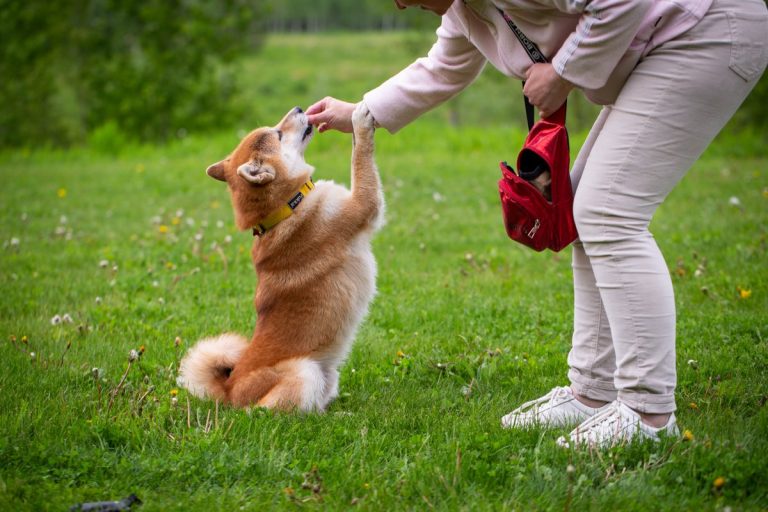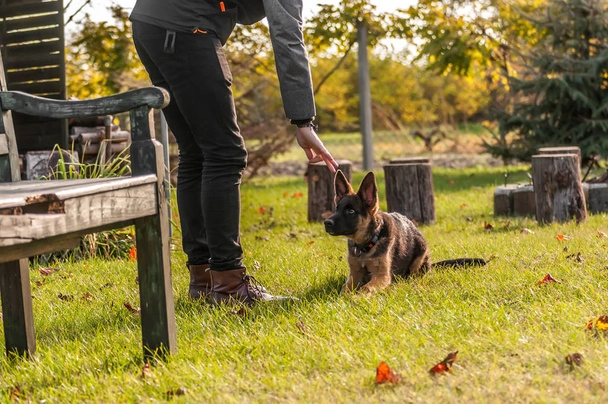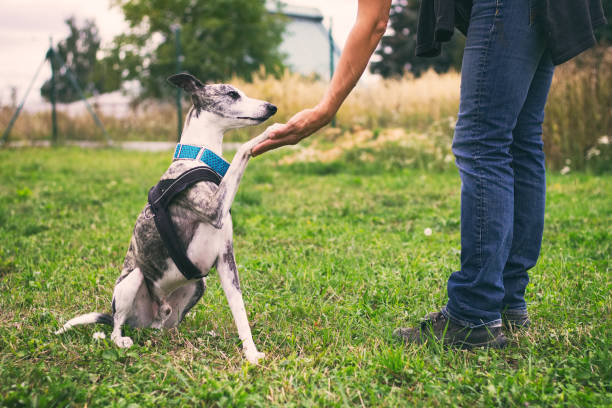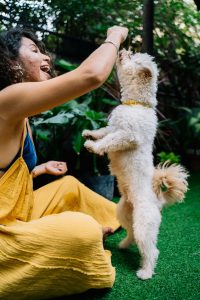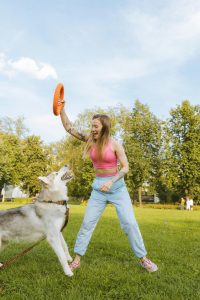Training a puppy is like trying to teach an adorable tornado to sit still. It’s chaotic, funny, and sometimes frustrating. But over the years, I’ve learned a few tricks that can make the process a lot easier. Whether you’ve got a tiny fluff ball or a strong-willed adult dog, these tips will help you build a happy, well-behaved pup.
Here’s what I’ve learned, and how you can use it.
Start with Basic Commands
Sit, Stay, Come, The Foundation of Obedience
Before you get fancy with tricks or advanced commands, focus on the basics. Every dog should know:
- Sit: Great for calming them down in a rush.
- Stay: Essential for keeping them safe.
- Come: The most important command for off-leash control.
How to Teach Sit
- Hold a treat close to your dog’s nose.
- Slowly move it up, so their head follows.
- Their bottom should naturally touch the ground.
- Say “Sit” as they do it. Reward with the treat.
Repeat this until they get it without the treat.
Pro Tip: Use short, simple words. “Sit” is better than “Have a seat, please.” Dogs don’t speak English, they learn by association.
Keep Training Sessions Short and Fun
Puppies have tiny attention spans
Training is most effective when it’s fun. If it feels like a chore, your dog will lose interest fast.
Best Practice: Train for 5–10 minutes at a time, several times a day. Use a mix of treats, toys, and praise. Keep your tone happy and excited.
Trying to teach a dog a new trick in one long session rarely works. Imagine spending 30 minutes trying to get a dog to “roll over.”
By the end, the dog is bored, and the owner is frustrated. But if you break that training into three five-minute sessions, the dog stays excited, learns faster, and everyone has more fun.
Use Positive Reinforcement
Rewards work better than punishment
Dogs learn best when they know they’re making you happy. Instead of punishing them for doing something wrong, reward them for doing something right.
- Treats: Use tiny pieces of their favorite snacks.
- Praise: A happy “Good dog!” goes a long way.
- Playtime: Use a quick game of fetch as a reward
What to Avoid
Never use physical punishment. Hitting, yelling, or using shock collars only teaches your dog to fear you.
According to the American Veterinary Society of Animal Behavior, positive reinforcement is proven to be the most effective and humane method for training dogs.
Socialize Your Puppy Early
Make new experiences normal
Puppies are like sponges. They absorb everything, good and bad. The more experiences they have in their first few months, the better they’ll behave later.
Socialization Checklist:
- Let them meet friendly dogs (in a safe setting).
- Take them for car rides.
- Expose them to different sounds (vacuum, doorbell, kids playing).
- Let them meet new people.
Pro Tip: If your puppy seems scared, don’t force them. Let them explore at their own pace.
Crate Training Done Right
A safe space, not a prison
Crates are a lifesaver for training, but only if you use them right. A crate should be your dog’s safe space, not a place for punishment.
How to Crate Train
- Make the crate comfortable with a soft blanket.
- Leave the door open at first. Let them explore.
- Toss treats inside so they see it as a happy place.
- Gradually start closing the door for short periods.
Never use the crate to punish your dog. They should see it as their cozy den, not doggy jail.
Reading Reviews for Training Programs
Not all trainers are equal
If you’re thinking about using an online training program or hiring a trainer, do your homework. Not all trainers use safe, humane methods.
Read reviews carefully, but don’t just look at the star rating. Look for details. Did other owners say the trainer was patient? Did the program use positive methods?
If you find bad reviews, take them seriously. And if you see a mix of good and bad reviews, dig deeper. Some trainers clean up false reviews, but they can’t hide real ones.
For more on how review removals actually work you can learn more here.
Pro Tip: Always ask a trainer about their methods before you start. If they mention shock collars or punishment, walk away.
Solving Common Problems
Jumping, Chewing, and Barking
Every dog has bad habits at first. The trick is knowing how to fix them without getting frustrated.
Jumping on People
- Teach “Off” as a command.
- Reward them for keeping all four paws on the ground.
- Ignore them if they jump, don’t give attention.
Chewing Everything
- Give them approved chew toys.
- Use a bitter spray on furniture or shoes.
- Supervise them until they learn.
Barking Too Much
- Figure out why they’re barking (boredom, excitement, fear).
- Use “Quiet” as a command and reward them for listening.
- Don’t yell, it makes them think you’re barking too.
Example: Your neighbor’s golden retriever used to bark non-stop at the mailman. They might train him to go to his bed and wait for a treat instead. Now, he wags his tail instead of barking.
The Power of Patience
Training takes time, don’t rush it
The most important thing I’ve learned is that patience beats everything. Dogs don’t learn overnight. They make mistakes. They get distracted. That’s okay.
The more patient you are, the more your dog will trust you. And a dog that trusts you will always want to make you happy.
A survey by the American Pet Products Association found that 85% of dog owners said patience was the most important part of successful training.
Training is About Connection
Training a dog isn’t just about teaching commands. It’s about building a bond. Your dog doesn’t just want to know what to do, they want to know they can trust you.
If you use these tips, you’ll have a well-behaved, happy dog who loves learning new things with you. And you’ll know that every sit, stay, and high-five isn’t just about good behavior, it’s about a stronger connection.
Because a well-trained dog isn’t just a smart dog. They’re a happy dog. And so are you.

